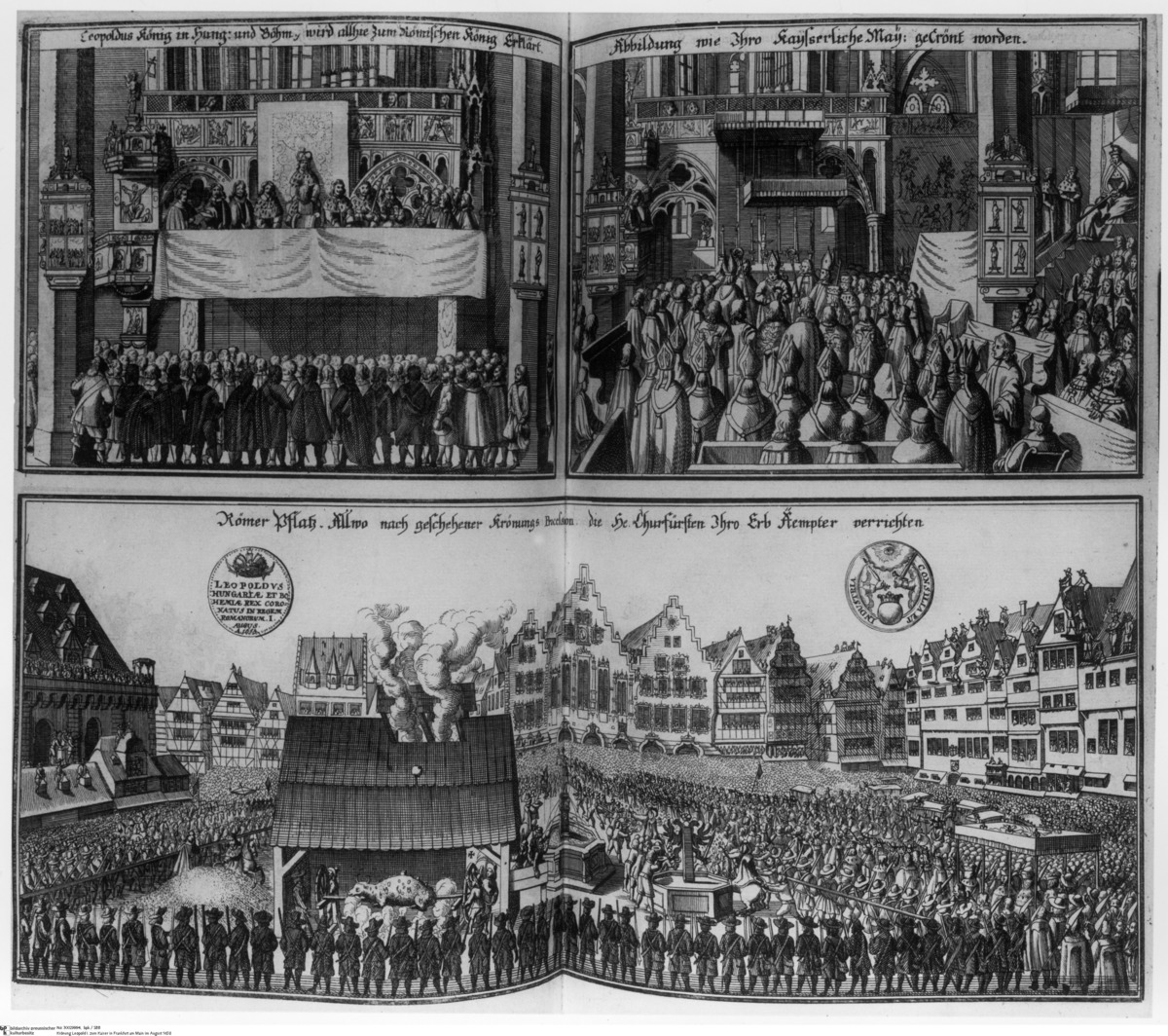Abstract
In 1658, after a 15-month interregnum, Leopold I (r. 1658-1705), the
second son of Habsburg Emperor Ferdinand III (r. 1637-57), succeeded his
father as Holy Roman Emperor. In domestic politics, the well-educated
and artistically inclined ruler pursued a policy based on Catholic
Counter-Reformation, the expansion of his core dominions, and the
centralization and streamlining of the administration. Leopold’s foreign
policy focused on reasserting Habsburg power in the Empire after the
devastating Thirty Years War, expelling the invading Ottomans from
Austria and Hungary, and fighting a prolonged battle against the
expansionary initiatives of France’s King Louis XIV (r. 1661-1715),
which culminated in the War of the Spanish Succession from 1701 to
1714.
The image below shows the imperial coronation festivities in and
around Frankfurt’s “Römer.” Frankfurt had been the site of the
coronation banquets of the German kings since 1147. Starting in 1562,
the coronation banquets of the Holy Roman emperors were held there as
well. The two scenes comprising the top half of this engraving take
place inside the “Römer,” Frankfurt’s historic city hall. The scene on
the left shows the imperial proclamation. The caption reads: “Leopold
King of Hungary and Bohemia is here declared Roman King” [“Leopoldus
König in Hung: und Böhm., wird allhie zum Römischen König erklärt”]. The
scene on the right shows the coronation itself. The caption reads:
“Depiction of how His Imperial Majesty was crowned” [“Abbildung wie Ihro
Kaijserliche Maij: gecrönt worden”]. The bottom half of the engraving
shows Römer Square after the procession and before the accompanying
feast (note the large ox roasting on a spit in the smokehouse in the
foreground). The caption reads: “Römer Square, where the Electors carry
out Their hereditary offices after the Coronation Procession took place”
[“Römer Platz, Allwo nach geschehener Krönungs Procession. Die He.
Churfürsten Ihro Erb Äempter verrichten”]. The “Römer,” a complex of
three step-gabled Gothic buildings, can be seen in the background
(center).
